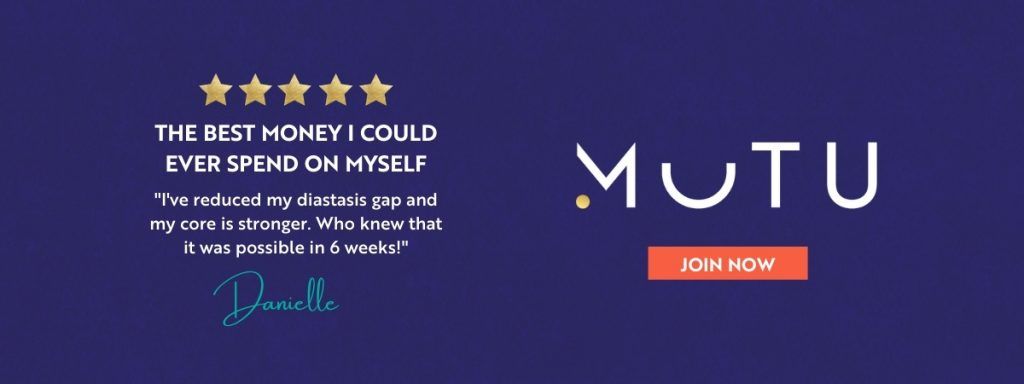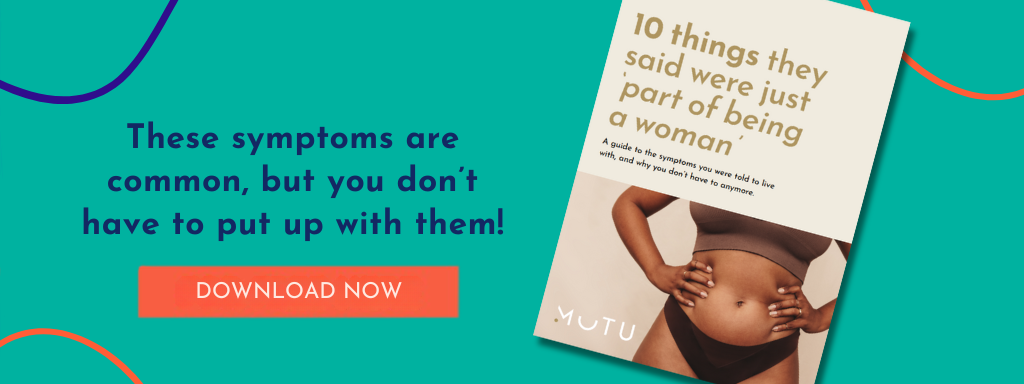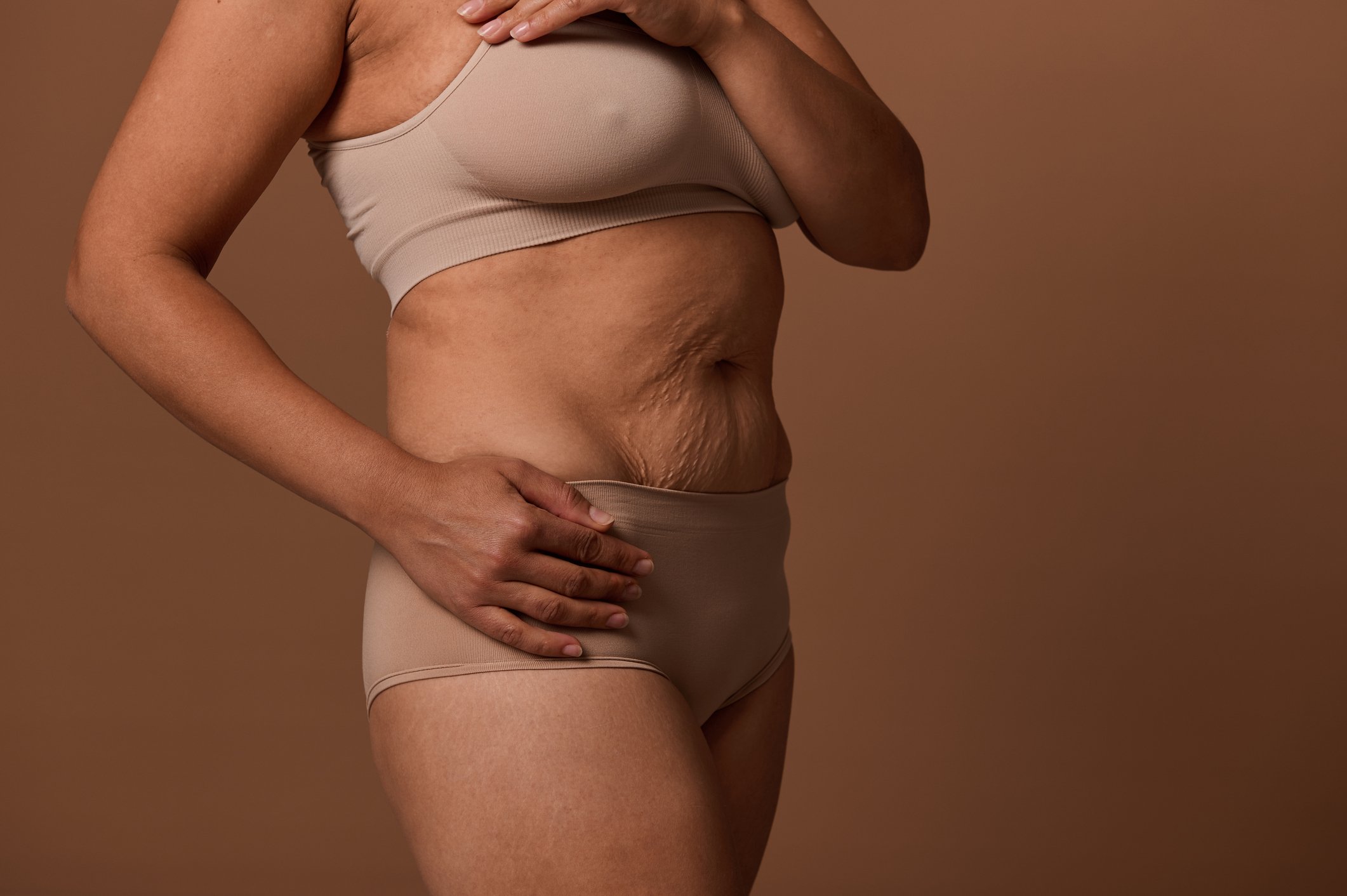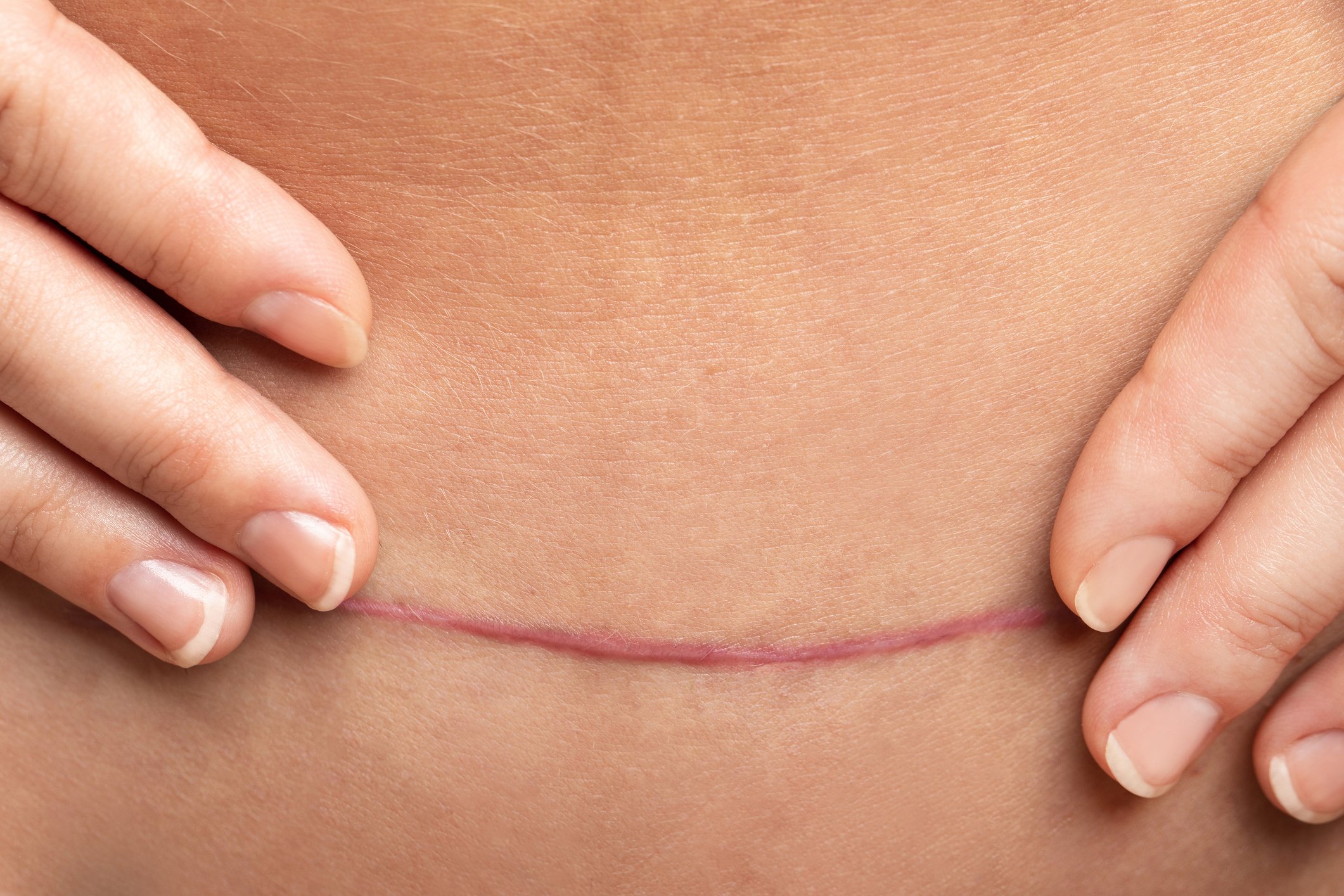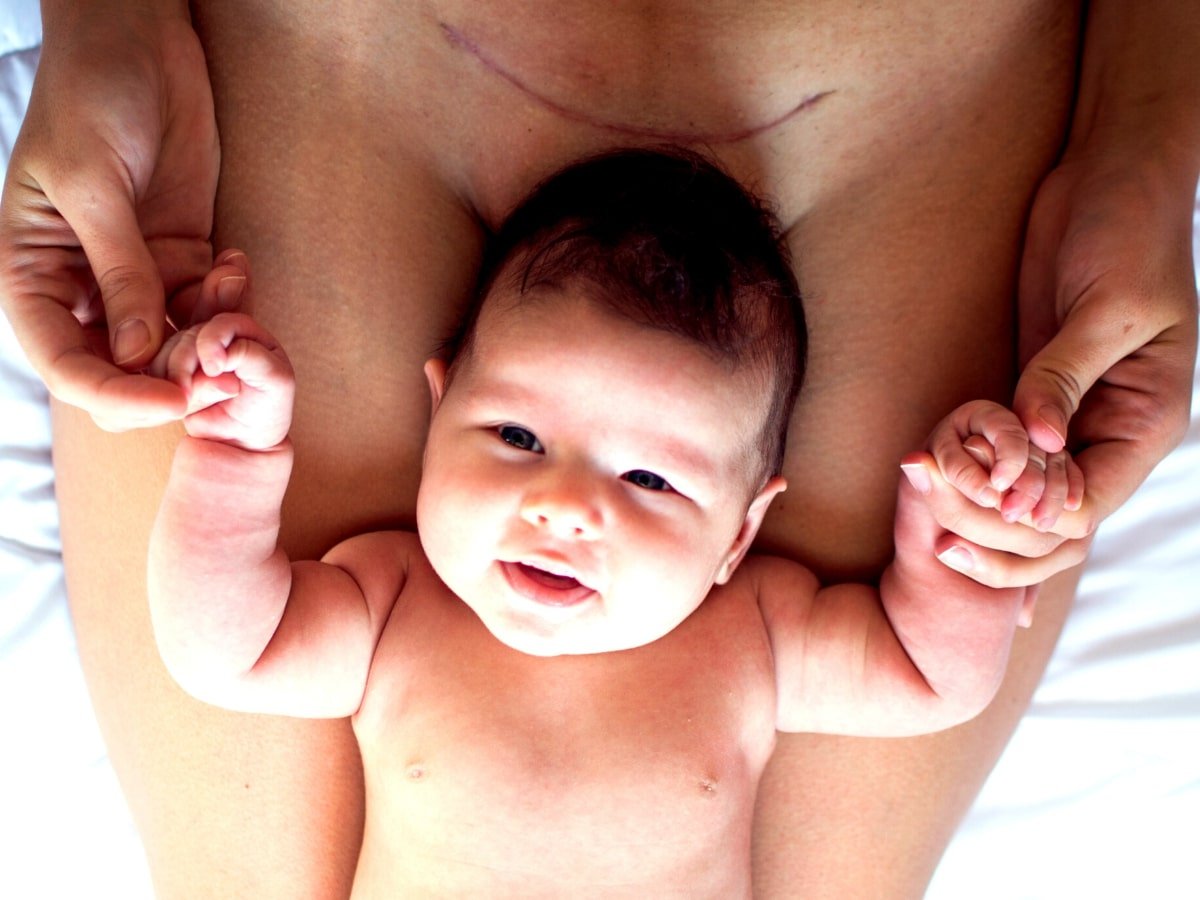Many mums we speak to are confused about exercising after a C-section.
We’ve put together some tips on how to get started safely with gentle mobilisations, breathwork and a focus on reconnecting to your tummy and pelvic floor.
Once you’re confident and reconnected to your core, you can start introducing more gentle restorative exercises.
What is a C-section, and When Can You Start Exercising After One?
A caesarean surgery, also known as a C-section, is a surgical procedure used to deliver a new baby through incisions made through the abdomen and uterus.
A C-section may be performed for a range of reasons—whether for medical, psychological, or personal choice—when a vaginal birth may not be safe, advisable, or preferred for the mother or baby.
Note that the surgeon manually separates the two strips of rectus muscle (that’s the rectus abdominis, or your ‘six pack muscle) at the midline to gain access.
This is important – your muscles have not necessarily been cut!
It is a very common major surgery for women in the UK, accounting for around 1 in 4 births.
But the fact that it happens frequently shouldn’t downplay the physiological trauma your body has undergone. More from the NHS on c-section recovery here.
It is a major invasive surgery requiring significant recovery. Giving birth, however we do it, is a huge achievement.
And exercising after your C-section needs to be appropriate and progress gradually.
Exercising after a C-section: Where To Start
When exercising after a caesarean delivery, you should start with gentle mobilisation as soon as possible.
Your focus during the early weeks will not be “working out” but rather foundational breathing and reconnecting your brain to your tummy and pelvic floor.
The sooner you do this after any birth, the better ☺️
You need to reestablish this connection so that any exercise you eventually do will be truly beneficial, especially in helping to resolve common post-C-section symptoms like back pain.
Why is your core so important after having a baby?
You need your core if you want to stand up, sit, move, twist, pull, push, bend, or turn —all of which are movements you do in everyday life.
Your core is connected (literally) to the muscles of your pelvic floor, which you need to prevent urination problems or a prolapse and to maintain overall function and health.
You also need a good connection and recruitment of your core muscles to help close diastasis recti, or the separation of your abdominal muscles, postpartum and ensure your core supports your body.
Your core is the foundation of your body!
1. Core engagement (breathing and pelvic floor contractions)
Proper engagement of your core is probably one of the most misunderstood muscle actions.
This simple breathing technique, combined with coordinated pelvic floor contractions, will help reconnect you to your tummy and teach you how to engage your entire core system of muscles while you rest and recover.
Practice breathing with coordinated pelvic floor muscle contraction a few times a day.
You can do this while you rest and recover, or while feeding your baby. Take long, slow breaths, exhaling with gentle muscle contractions, inhaling with a complete release and relaxation of the muscles.
How to do the core engagement breathing technique:
- Imagine your abdomen as a clock, with your belly button at 12 o’clock, your pubic bone at 6 o’clock, and your hip bones at 3 o’clock and 9 o’clock.
- Imagine you are slowly and gently drawing the hip bones, or the 3 and 9 o’clock positions, together.
- It will also work if you imagine you are drawing them apart! Don’t worry that you can’t feel much happening for now. Go gently and do the movement on a long, slow exhale.
- At the same time, engage your pelvic floor muscles.
You will most likely experience numbness around your scar site, so feeling what is going on in your core can be hard.
The common visualisation of ‘gently drawing belly button to spine’ may be unhelpful as you may not be able to feel this movement.
Find more guidance on how to engage your core here.
Restorative Exercises for C-Section Recovery: Taking it a Step Further
Once you’ve got the hang of reconnecting to your core and pelvic floor, you can start adding gentle restorative exercises. These are still safe for the early days postpartum.
Always listen to your body, nothing should cause strain or pain. These movements are slow, gentle, and controlled.
2. Banded Breaths
This simple exercise helps reconnect you to your diaphragm, core, and pelvic floor.
The band will help you connect to your diaphragm. As you breathe, you should feel your rib cage expand under the band.
How to do banded breaths:
- Find a band, a towel or a belt
- Wrap it around your rib cage and gently hold it there
- Exhale and draw your pelvic floor up
- Inhale release everything
- Repeat for a total of 8 breaths
3. Banded Clams
This exercise is to reconnect you to your glute muscles.
Weak glutes contribute to core and pelvic floor dysfunction. Your glutes need to be firing and working to support your body in daily movements and exercises!
How to do banded clams:
- Grab a loop band
- Wrap it around your knees
- Lie down on your side
- Exhale as you open your top leg, focusing on using and feeling your glutes (bum!)
- Inhale and release glute engagement as you lower your leg back down
- Repeat 5 times on both sides
4. Banded Pull Aparts
This exercise will help reconnect you to your tummy, core muscles and pelvic floor, which is especially important during your postpartum recovery.
Placing a hand on your core during the move can help that mind-to-muscle connection.
How to do banded pull-aparts:
- Grab a loop band
- Wrap it around your knees
- Lie on your back
- Exhale as you lift your pelvic floor and engage your core
- Pull your knees apart, creating gentle tension in your band
- Inhale, bring knees back together, and release engagement
- Repeat for a total of 8
Resuming exercising after a C-section: Take things slowly
Remember that everyone’s recovery after a C-section is different, so it’s essential to take things at your own pace and not compare yourself to others.
By taking care of your body, you can safely and gradually get back to functional movement and beyond.
Practice these breathing and muscle-engaging exercises while you rest and recover, and while feeding your baby.
Take long, slow breaths, exhaling with gentle muscle contractions, inhaling with a complete release and relaxation.
Remember to always roll to your side first when getting up from lying on your back; don’t sit straight up.
Avoid sit-ups or crunches for now.
Go for a walk outside as soon as you feel able and make it a daily activity. Walking and fresh air can help improve your emotional health and increase circulation to aid healing and reduce scar tissue.
Diet and nutrition after a C-section
Lastly, the food you eat is massively essential for your body’s ability to heal after a C-section.
For good gut health, try to eat a diet rich in clean protein, with plenty of green and deep-coloured vegetables, berries, essential fats, and fibre-rich vegetables and fruits.
Include anti-inflammatory foods like garlic, green tea, turmeric, and ginger.
Good hydration is vital. Drink lots of water, herbal teas and water-rich foods.
Stress, lack of sleep (I know.. unavoidable for new mums!) and inflammatory ‘comfort’ foods or drink like sugar or alcohol will slow healing.
This guide to healing nutrition postpartum will guide you further.
Take time to rest!
In the early days, massage, mobilise, find and focus on strengthening your deep muscles. Eat naturally sourced, fresh food to help your body recover and nourish itself.
But most important of all, relax, let people rub your feet and bring you tea and snacks, get as much sleep as you can, and love your body. It’s achieved something extraordinary.
